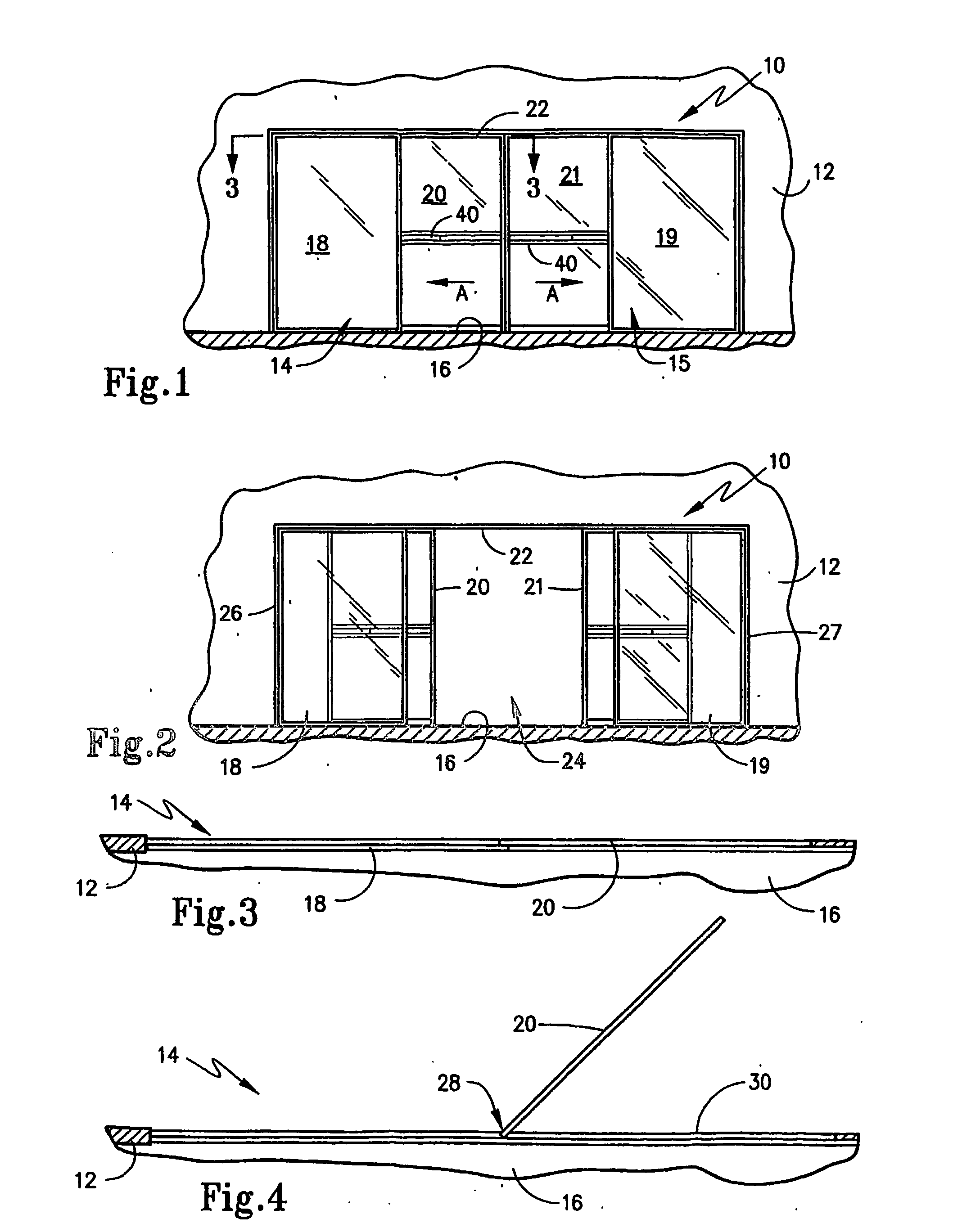Emergency release assembly and sliding door incorporating the same
a technology of emergency release and release mechanism, which is applied in the direction of door/window fittings, building locks, constructions, etc., can solve the problems of difficult to overcome the closing force of automatic sliding doors, disadvantages of traditional automatic sliding doors with break-away capability, and many simple closure structures without latches and/or locking capabilities. , to achieve the effect of simple and reliable construction and operation
- Summary
- Abstract
- Description
- Claims
- Application Information
AI Technical Summary
Benefits of technology
Problems solved by technology
Method used
Image
Examples
Embodiment Construction
[0047] The present invention broadly concerns door closures used with respect to the entryways of dwellings and other buildings. The present invention, however, is specifically directed to a sliding door assembly such as that used in many commercial establishments. It specifically concerns mechanisms, and doors incorporating those mechanisms, which are automated but which have an emergency break-away capability. However, while the present invention is described with respect to an automatic sliding door assembly, it should be understood that this invention may be used in any application where an emergency break-away capability is desired, even on non-sliding doors. Moreover, the present structure may also be used for the primary latching of a door without break-away capability. It should be further understood that the present invention is contemplated to be manufactured as original equipment with such a sliding door, but also may be constructed for retrofit capability.
[0048] With th...
PUM
 Login to View More
Login to View More Abstract
Description
Claims
Application Information
 Login to View More
Login to View More - R&D
- Intellectual Property
- Life Sciences
- Materials
- Tech Scout
- Unparalleled Data Quality
- Higher Quality Content
- 60% Fewer Hallucinations
Browse by: Latest US Patents, China's latest patents, Technical Efficacy Thesaurus, Application Domain, Technology Topic, Popular Technical Reports.
© 2025 PatSnap. All rights reserved.Legal|Privacy policy|Modern Slavery Act Transparency Statement|Sitemap|About US| Contact US: help@patsnap.com



